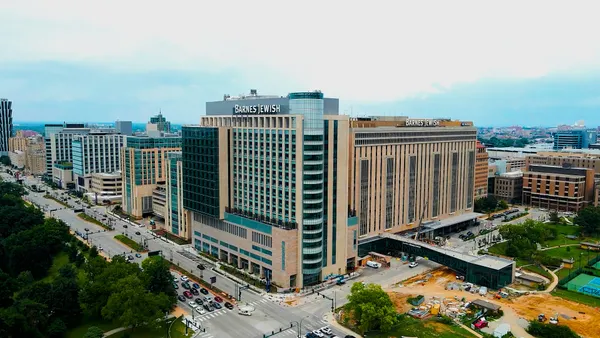Dive Brief:
- The Virginia Department of Transportation on May 22 issued a Draft Request for Proposals for the $3.6 billion Hampton Roads Bridge-Tunnel expansion project that will see the construction of a four-lane tunnel and widen an existing four-lane portion of Interstate 64 to create eight lanes of over-water capacity between Hampton, Virginia, and Norfolk, Virginia.
- The original plan was to build a three-lane tunnel, but the department switched to the four-lane design because the cost difference would be negligible and a four-lane version would reportedly actually be easier to build, The Virginian-Pilot reported. The new tunnel will handle eastbound traffic, and the existing ones will be converted to westbound lanes. The new bridge-tunnel will also use dynamic tolling and one or more high-occupancy lanes in each direction, according to the RFP.
- The department short-listed three potential public-private partnership teams to deliver bids on the project, but the group led by Skanska USA Civil Southeast and Kiewit Infrastructure withdrew, informing project officials that they wanted to pursue other work instead. The two remaining bidders are Hampton Roads Connector Partners, which includes Dragados USA Inc., HDR Engineering and Mott MacDonald, and Hampton Roads Capacity Contractors, which includes Fluor Enterprises, The Lane Construction Corp. and AECOM Technical Services.
Dive Insight:
States are becoming more open to partnering with the private sector for the construction of bridges, highways and tunnels, and the terms of P3s can include state transportation departments handing over a combination of financing, design, operations and maintenance in addition to construction work. These arrangements allow the public to benefit from the technical expertise of private industry and give agencies access to financing that can stretch taxpayer dollars across more projects.
In fact, private-sector involvement in President Donald Trump's infrastructure plan is key to leveraging the proposed, initial $200 billion federal investment into the money necessary to execute his administration's $1.5 trillion proposal.
However, transferring risk to the private sector doesn't guarantee a problem-free process. For example, in June 2017, the Indiana Finance Authority announced that it was taking over a highway project awarded as a P3 after the private partner allegedly failed to pay subcontractors in a timely manner. The private group also reportedly left the authority to perform $236 million of work with only $72 million of project funds remaining.
But there are the happy endings that have made P3s increasingly popular. In Michigan, for instance, state transportation officials announced in October that they would use private-sector partners to carry out a $1 billion highway modernization program, shaving up to an estimated 10 years off the schedule. This is because private-partner financing would eliminate the need for the Michigan Department of Transportation to wait for public funding to start construction.











